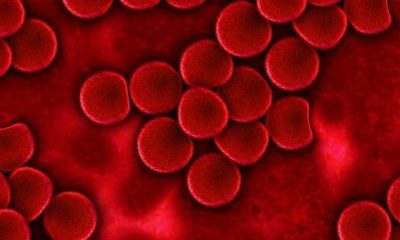Disordered eating, not to be confused with an eating disorder, is an overlooked issue in children. A new study sheds light on the extent of this phenomenon.
A new study. published in the journal JAMA Pediatrics, found more than 20% of kids and adolescents around the world show signs of disordered eating.
Disordered eating has similarities to an eating disorder. For instance, both can include rigid restrictions on how much a person eats, what he eats, and how much exercise one does concerning food, therapist Jennifer Rollin, founder of The Eating Disorder Center in Rockville, Maryland, said. CNN reported.
“However, it’s important to note that both disordered eating and eating disorders are serious and deserve treatment and professional help,” Rollin told the outlet.
Disordered eating behaviors can gradually turn into an eating disorder.
In the study, researchers reviewed 32 studies from 16 countries and found about one in five children and adolescents showed disordered eating behaviors. The signs were more prevalent among girls, older adolescents, and those with a higher body mass index, or BMI, the study found.
“The prevalence of disordered eating could be even higher if children were asked about binge-eating or muscle-building symptoms and included studies during the pandemic,” Dr. Jason Nagata, assistant professor of pediatrics at the University of California San Francisco, said.
The behaviors associated with disordered eating are dangerous and can damage organs including the heart, brain, liver, and kidneys, Nagata, who was not part of the study, said.
“Disordered eating is a significant problem among children and adolescents, and early detection and intervention are crucial to prevent long-term health consequences,” study author Dr. José Francisco López-Gil, a postdoctoral researcher at the Health and Social Research Center at the University of Castilla-La Mancha in Spain, said.
“The findings can help health professionals, educators, and parents understand the magnitude of the problem and develop strategies for prevention and intervention,” López-Gil added.
Adults should be aware of the actions associated with this condition, both for themselves and their children.
López-Gil named a few such behaviors, including overthinking about body weight, negative self-image, rigid food rules, binge eating, and purging behaviors.
Partaking in exercises that negatively impact a person’s quality of life might also be another red flag, Nagata noted.
“Other red flags include if an individual engages in fasting, significant caloric restriction, vomiting, or using laxatives or diet pills to lose weight,” he said.
Emphasizing the importance of early intervention, López-Gil advised parents to seek medical attention or meet a mental health specialist if they see any signs of disordered eating in the child.
“Parents can also call the National Eating Disorders Association helpline (800-931-2237) for guidance,” Nagata suggested.
As for teens, those who want to discuss their eating behavior can talk to a health care provider, school counselor, family member, or teacher, Nagata said
“Eating disorders and disordered eating can both take away and limit someone’s quality of life as they both fill your brain with thoughts about food and your body,” Rollin said, adding, “freedom is possible, and you deserve to live a full life — not one that is consumed with food, exercise, and weight.”
















